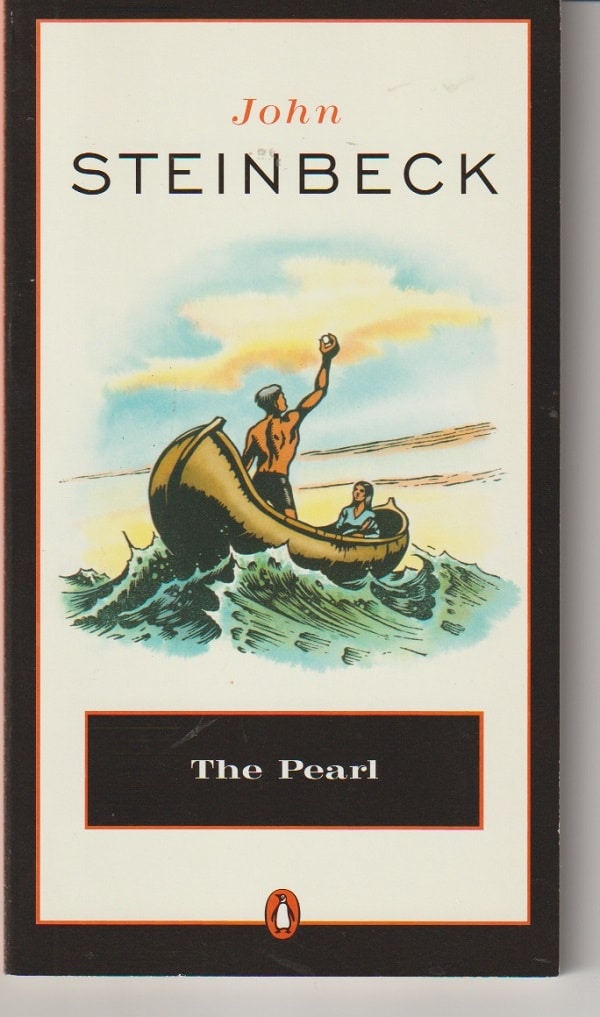On the very first page of The Pearl, John Steinbeck signals that this short, tense novel is a parable.
In the context of the story, he explains that it is a story told often by generations of local people.
“And, as with all retold tales that are in people’s hearts, there are only good and bad things and black and white things and good and evil things and no in-between anywhere.”
In other words, the story of Kino, Juana and their baby Coyotito is, like the Jesus parable of the Good Samaritan or his one about the Pharisee and the Publican, shorn of realism. It is a fable that has a lesson.
Sometimes, the lesson of a Jesus’s parable is clear; other times, it isn’t. Steinbeck writes of The Pearl that “perhaps everyone takes his own meaning from it and reads his own life into it.”
The Pearl of the World
The 30-000- word story of The Pearl is clear enough. Kino, the fisherman in the Mexican town of La Paz (Peace) on Baja California, along the Gulf of California, one day dives and finds a great and beautiful pearl — the Pearl of the World.
This happens the day after Coyotito has been stung by a scorpion and the poison is spreading through his small body. So, the pearl seems a great boon. It is enough to get the doctor who usually ignores poor families such as Kino’s to come out twice to see the baby — certainly with the expectation of a rich payment from the proceeds of the family’s sale of the pearl.

Kino dreams of buying a real house and a rifle for himself, and of paying the priest to marry Juana and him and to baptize Coyotito, and of sending the boy to school so he can escape the life that Kino and his forebears have lived for centuries.
“Out in the estuary a tight woven school of small fishes glittered and broke water to escape a school of great fishes that drove in to eat them. And in the houses the people could hear the swish of the small ones and the bouncing splash of the great ones as the slaughter went on.”
“Like a sin!”
With the doctor’s ministrations, Coyotito is out of danger. But, that night, in the deep dark of the couple’s hut, someone sneaks in to try to steal the pearl. Kino drives the intruder away, drawing blood with his fishing knife but suffering a bruised forehead. Once she knows Kino is alright, Juana boils over:
“This thing is evil. This pearl is like a sin! It will destroy us. Throw it away, Kino. Let us break it between stones. Let us bury it and forget the place. Let us throw it back into the sea. It has brought evil. Kino, my husband, it will destroy us.”
After this, the pearl becomes a magnet for violence, greed and pain. The story of the Pearl of the World becomes a tragedy for Kino, Juana and Coyotito.
The lesson?
And what is the lesson?
Is it that the pearl was evil because it led Kino to think above his station? I don’t think so. The bad things that happen aren’t any doing of his.
Is it that the pearl was evil because it incited covetousness in Kino’s neighbors? Not at all, none of those neighbors was involved in the efforts to take the pearl away from Kino.
Is it that the pearl was evil because the middle-class and rich — who, in the usual way of things and of La Paz, lord it over poor people such as Kino and think of them and treat them as animals — lusted for the richness that the pearl would bring?
Now we’re onto something.
In a society of such stark inequality — in other words, in a society like modern-day America — those with power and riches lust for even more. Those who are poor and unsophisticated are easy prey.
Can a reader of The Pearl imagine this story in a modern-America setting?
I think it would be very easy to imagine.
Patrick T. Reardon
9.28.21
Written by : Patrick T. Reardon
For more than three decades Patrick T. Reardon was an urban affairs writer, a feature writer, a columnist, and an editor for the Chicago Tribune. In 2000 he was one of a team of 50 staff members who won a Pulitzer Prize for explanatory reporting. Now a freelance writer and poet, he has contributed chapters to several books and is the author of Faith Stripped to Its Essence. His website is https://patricktreardon.com/.
